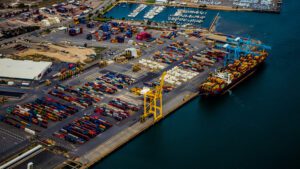In a major advancement for hydrogen storage and transportation, scientists at the University of Hyogo in Japan say they have succeeded in stabilizing ammonia in solid form at room temperature and atmospheric pressure for the first time.
This achievement could significantly improve the safety profile of ammonia, a highly toxic substance, and could have profound implications for the transport and storage of hydrogen, a crucial element in the transition to green energy, according to reports.
Ammonia, often regarded as one of the most efficient carriers for hydrogen, can store and transport hydrogen without emitting carbon, but its toxicity and instability in gaseous form prevnts its widespread use, according to University of Pennsylvania researchers.
By trapping ammonia particles in a type of glass that prevents evaporation, the Japanese researchers have found a way to solidify ammonia, making it safer and easier to handle, according to Hydrogeninsight. While this process is a breakthrough in stabilizing ammonia, the scientists have yet to find a method to efficiently release the hydrogen from the solidified form.
The ability to store and transport hydrogen efficiently is not just a technological question but also a geopolitical one. With ongoing geopolitical tensions — especially concerning energy supply chains — the capacity to develop safe, reliable ways to move and store green energy is vital. Global competition over the rapidly expanding global hydrogen fuel market is heating up, as F&E Trends has reported.
Countries are vying to secure energy independence, diversify their sources, and reduce reliance on fossil fuels. Hydrogen, particularly green hydrogen, has the potential to play a central role in achieving these goals, offering a carbon-free energy source that could power industries, homes, and even vehicles.
Challenges have limited use of hydrogen
However, the practical challenges of hydrogen storage have limited its deployment. Traditional methods rely on high-pressure tanks or cryogenic temperatures, both of which are costly and carry significant safety risks. This is where the solidification of ammonia presents a game-changing opportunity. If ammonia can be stabilized and used as a hydrogen carrier at a global scale, it could make hydrogen transportation across continents safer and more economically viable, reducing the reliance on volatile fossil fuel markets.
The stabilization of ammonia is further enhanced by a complementary innovation in ammonia synthesis. Recent research shows that ammonia production can now be carried out at lower temperatures and pressures using an iron phosphide (FeP) catalyst combined with an electric field. This method enables ammonia to be synthesized dynamically, on-demand, without the need for the high energy and infrastructure typically required by the conventional Haber-Bosch process, according to researchers.
If scientists can couple this synthesis breakthrough with the safe storage of ammonia, the future of hydrogen transportation looks increasingly promising. This dual advancement could pave the way for on-site ammonia production and storage facilities powered by renewable energy, which would be critical in ensuring hydrogen’s role in the energy transition amid shifting geopolitical dynamics.
The significance of this research goes beyond scientific achievement; it addresses a critical challenge in the global energy transition. As countries around the world, led by the US, increasingly seek alternatives to fossil fuels, hydrogen has emerged as a key component of decarbonization strategies. However, its large-scale adoption hinges on safe and efficient methods of storage and transportation. Ammonia, with its high hydrogen density and zero-carbon footprint, is positioned as a promising solution, and this latest innovation could remove the key barrier of its toxicity and instability.














